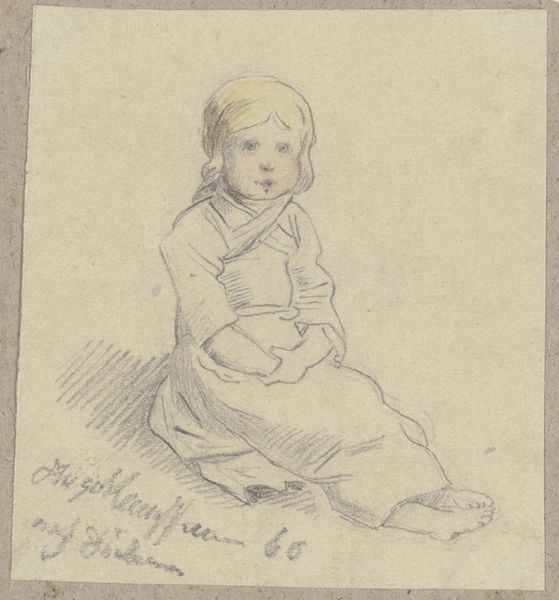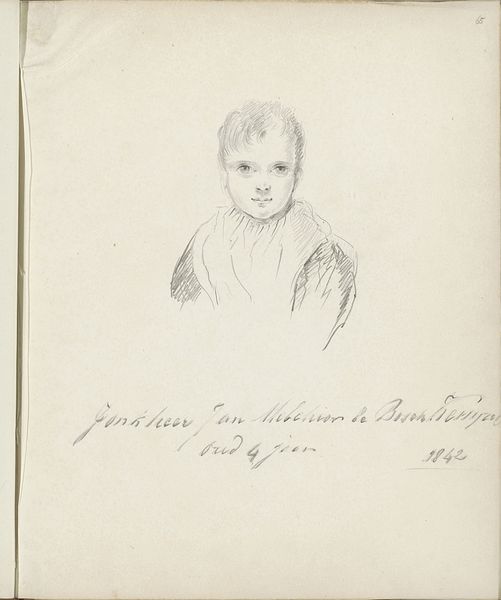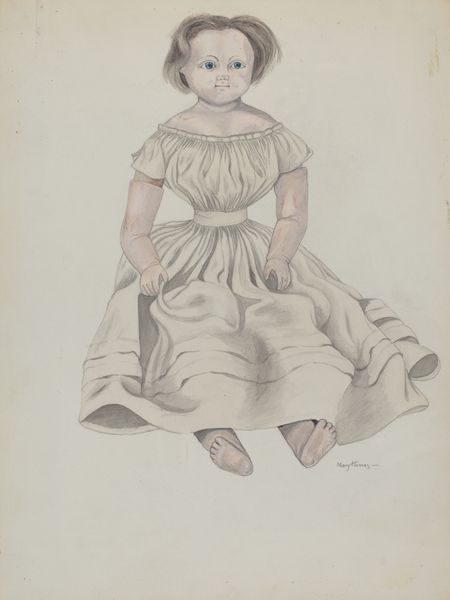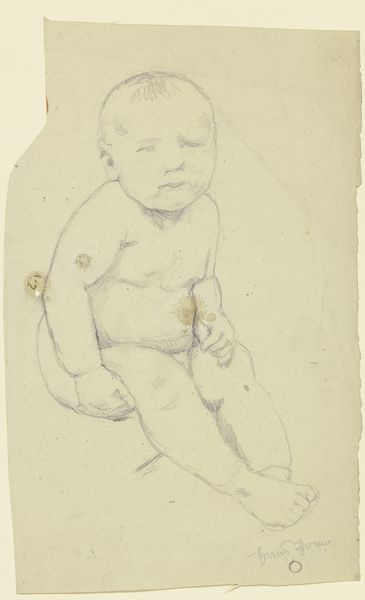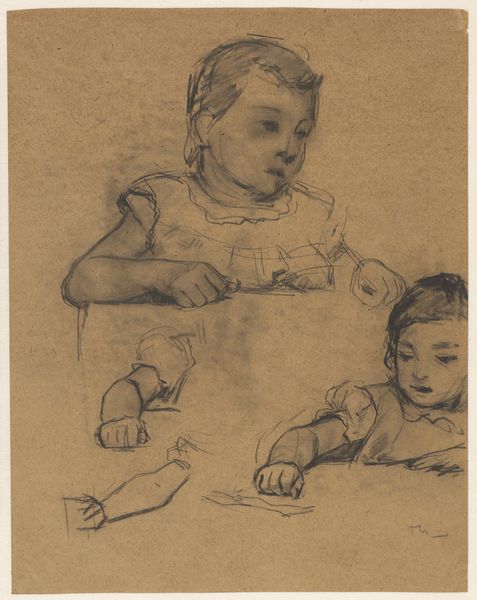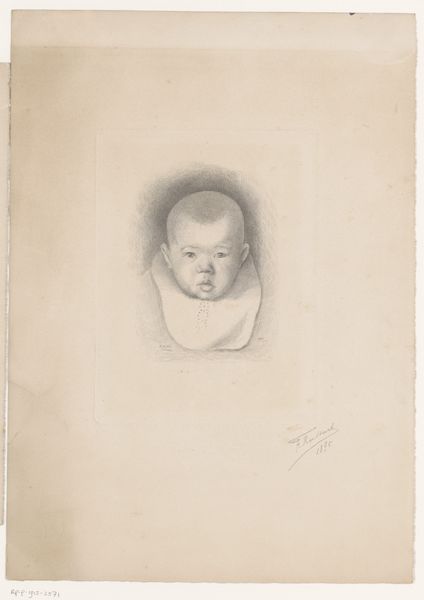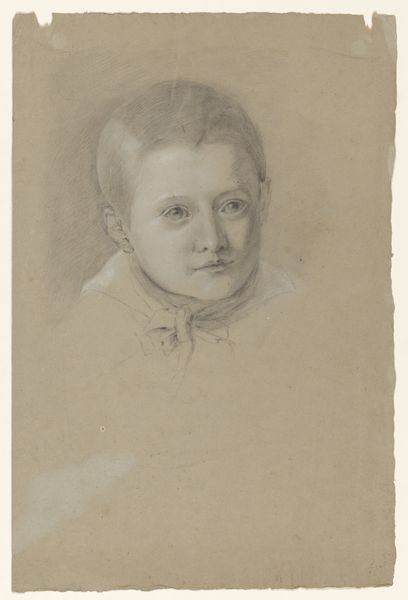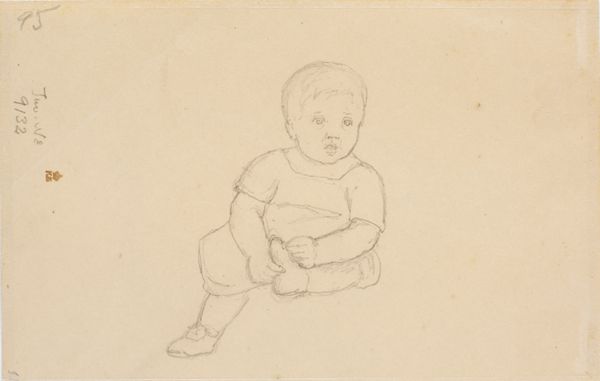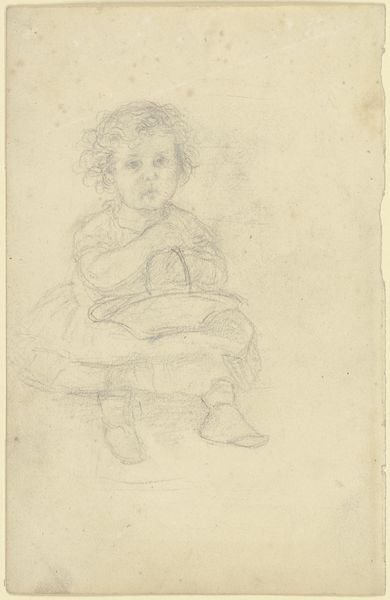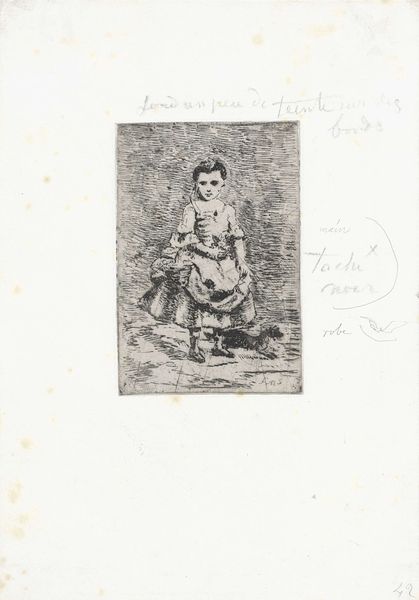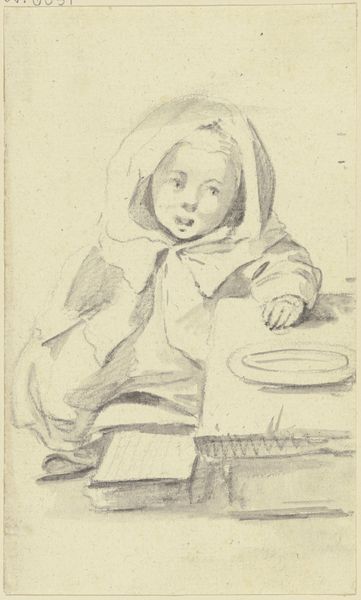
Copyright: Public Domain
Curator: Here we have Hugo Kauffmann's "Am Boden sitzendes kleines Kind", or "Small Child Sitting on the Ground," made in 1860. It resides here in the Städel Museum. Editor: What a charming little tyke! I adore the direct gaze; it feels like being let in on a secret, doesn’t it? And those chubby little legs, just… darling. Curator: Absolutely. And consider the materials. Kauffmann chose coloured pencil on paper—accessible, relatively inexpensive, suggesting a study rather than a finished commission. This was likely created outside formal academic circles. A move to bring the artistic process closer to everyday life. Editor: Yes, there's an immediacy about it. It has the air of a quick sketch, yet it’s full of feeling. Look how the lines suggest depth in the folds of the dress! You know, that finger to the lips almost makes me feel like I am being asked not to interrupt its playtime. Curator: The Romantic and Realist styles merge nicely here. On one hand, Kauffmann is capturing the everyday life of the child but elevates it with sensitive rendering of its innocent character. Note, there are signs of sentimental representation here. It captures, or manufactures, an ideal vision of childhood at the time. Editor: An idealized moment for sure. Yet those feet, poking out so endearingly, feel wonderfully real. And is that a bit of dirt on its dress? Oh, I simply love the humanness! It isn't sugar-coated as some portraits of the era tend to be. Curator: A deliberate decision perhaps to engage with Realism while also profiting from the commercial demands of Romantic genre paintings which focused on the emotional lives of regular people. I wonder about the sitter's relationship with the artist, or even their social standing at the time. Editor: Perhaps a beloved child in the family, observed with tenderness, even love. It’s a simple picture, really, but full of stories, isn’t it? Makes one reflect on our own childhood… Or maybe on our aspirations to observe people, and record the seemingly inconsequential details with affection. Curator: Indeed, seeing this small but moving artwork can teach us about how seemingly humble material and modes of production were part of a larger negotiation between capturing 'reality' and idealized fantasies that shaped the nineteenth-century experience. Editor: Exactly. A beautiful blend of art and… heart. Thank you for that astute observation.
Comments
No comments
Be the first to comment and join the conversation on the ultimate creative platform.
